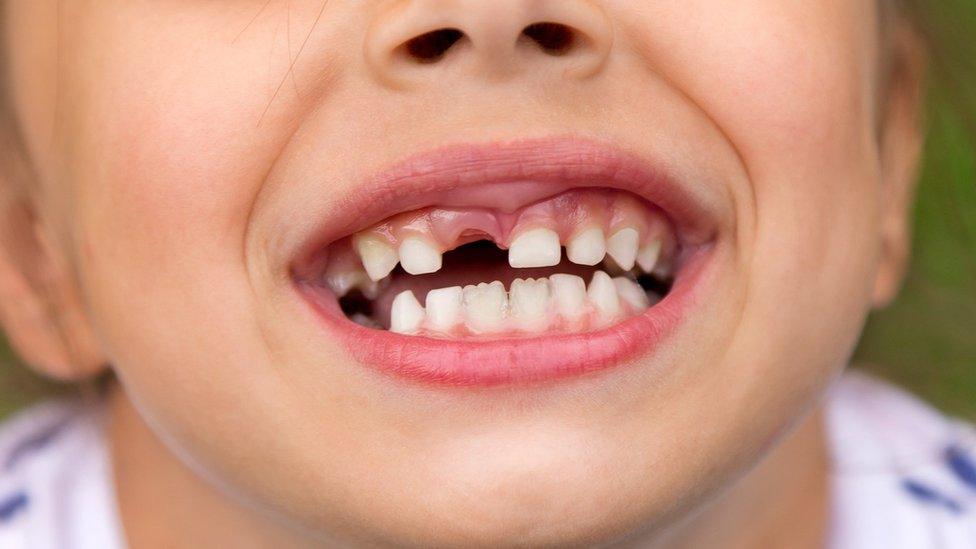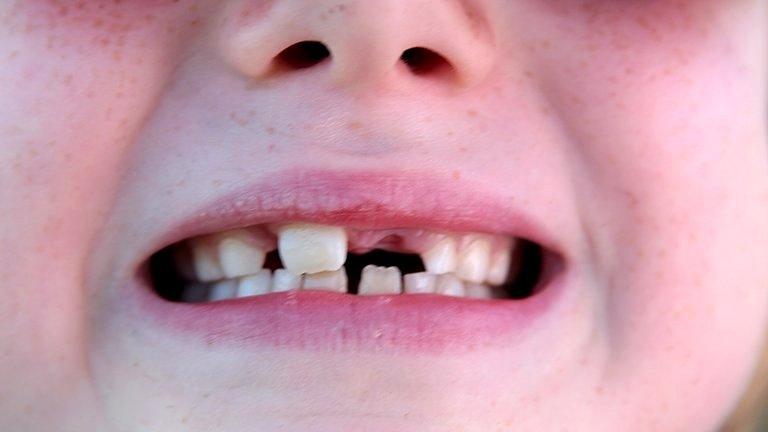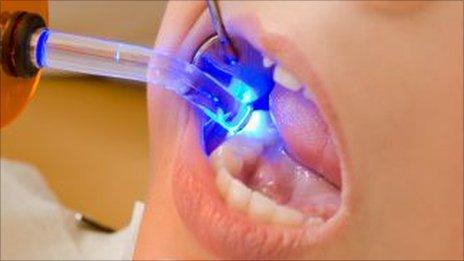Tooth decay in children aged five falling, report shows
- Published

The Designed to Smile programme encourages children to brush their teeth
The proportion of five-year-old children with tooth decay in Wales is continuing to fall, an official report has shown.
The Public Health Wales dental survey showed those from the most-deprived backgrounds have had the biggest reduction over the last decade.
Health Secretary Vaughan Gething said he was "pleased" by the progress.
But chief dental officer, Dr Colette Bridgeman, said there was still "scope for improvement".
The report, based on a survey of about 8,000 five-year-old children at more than 500 schools in Wales in 2015-2016, is the latest carried out by the Welsh Oral Health Information Unit.
It showed in 2007-08, about 14 out of a class of 30 (47.6%) children had decay, with an average of 4.2 teeth affected.
But by last year, this had fallen to about 10 children out of a class of 30 (34.2%), with an average of 3.6 teeth affected.
Only Cwm Taf University Health Board has not seen a "statistically and clinically significant reduction" in tooth decay among this age group, the report said.
It said dental disease levels in children in Wales continued to improve across all social groups, with the most deprived fifth seeing the largest reduction in decay - 15%.
'Great improvements'
This improvement is "likely to be due to the impact" of the Welsh Government's Designed to Smile programme, external, a scheme introduced in 2009, which encourages children to brush their teeth and provides dental care equipment.
The report said that, while there had been "great improvements" over the last nine years, there is plenty of scope for further improvement for the third of children still experiencing decay.
Dr Bridgeman said, typically, half of decay experienced by five-year-olds will have been evident from when they were three, so the government was "re-focussing" Designed to Smile on children aged zero to five.
Vaughan Gething said: "It's clear that our Designed to Smile programme is making a real impact in improving the oral health of children across Wales but we know that we have to continue seeing these improvements."
- Published6 February 2015

- Published10 October 2011
